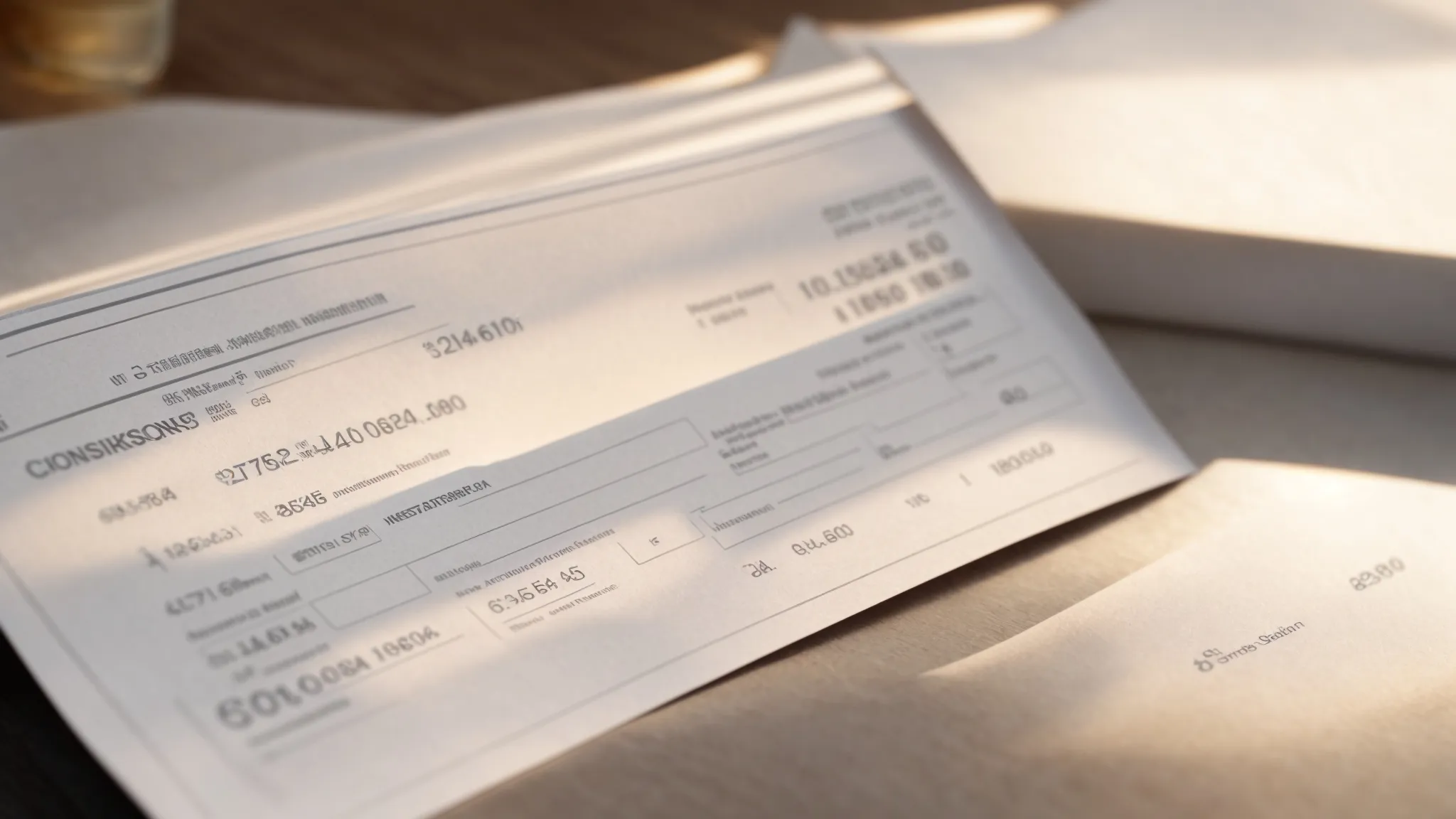Cheque payment issues can be frustrating for small business owners and bookkeepers. Misplaced funds, delays in cheque clearing, and complications with debt collection are common challenges that can disrupt cash flow. This article will identify key cheque payment issues, explore their causes, and implement effective solutions to help streamline transactions. By understanding the processes of cheque refund and reissue, as well as the legal implications involved, readers will be better equipped to manage these situations effectively. Engage with this content to mitigate your cheque-related concerns and improve your payment processes.
Identifying Common Cheque Payment Issues

Common cheque payment issues can disrupt financial transactions and impact customer relationships. Understanding insufficient funds situations, recognizing post-dated cheque problems, and observing stop payment orders helps maintain smooth operations. Additionally, detecting cheques lost in transit and addressing mismatched signatures enhance customer service, ensuring a more efficient process for individuals and businesses relying on deposits and online banking.
Understanding Insufficient Funds Situations
Understanding insufficient funds situations is crucial for any business that accepts cheques as payment. When a cheque is presented for payment but the issuing account does not have enough balance, the bank may decline the transaction, often resulting in a returned cheque fee. Businesses need to be aware that these fees can impact their cash flow and overall finances, prompting the importance of monitoring customer accounts through mobile banking or similar tools.
The cheque truncation system has streamlined cheque processing, making it essential for businesses to clearly understand how insufficient funds affect their transactions. For instance, if a company relies heavily on cheque payments, knowing that a cheque cannot clear due to insufficient funds can create delays in cash flow, leading to additional interest or financial planning difficulties. By fostering open communication with customers regarding payment methods and maintaining accurate records, businesses can mitigate these issues and ensure smoother financial operations.
Recognizing Post-Dated Cheque Problems
Recognizing post-dated cheque problems is essential for businesses managing cash flow and maintaining customer relationships. A post-dated cheque, written for a future date, may not clear until that date arrives, making it impossible for the recipient to access those funds immediately. If a business processes such a cheque early, they may inadvertently create issues, such as affecting their transaction account balance or causing complications in their overall currency management.
To avoid complications, companies can employ technology tools like a mobile app to track cheque statuses and manage payment schedules. Businesses can also communicate clearly with their customers about the expected timeline for cheque processing, ensuring everyone is on the same page. Monitoring such payments allows businesses to adapt their direct debit practices when necessary, leading to smoother financial operations and fewer surprises related to a bank account‘s current status.
Observing Stop Payment Orders and Their Effect
Observing stop payment orders is vital for any business utilizing a cheque payment system. A stop payment order can be issued when an individual realizes there has been an error or potential fraud, enabling them to prevent the cheque from being processed. Businesses must stay informed about such orders since they can impact cash flow and budgeting, especially if these payments represent significant assets or liabilities in the company’s finances.
In Canada, businesses should also be cautious of scams that might involve unscrupulous individuals requesting stop payments. Running a reliable payment system requires companies to verify any payment changes or orders to safeguard their credit and protect against any financial loss. By implementing best practices and clear communication with clients, businesses can mitigate risks associated with stop payment orders while ensuring smoother financial transactions.
Detecting Cheques Lost in Transit
Detecting cheques lost in transit is essential for businesses to safeguard their financial interests. When a remittance is not received as expected, it becomes necessary to communicate with the financial institution to track the cheque‘s journey. Implementing tracking systems can help minimize the associated risks of lost payments, allowing businesses to quickly identify whether a cheque is still on its way or needs to be reissued.
In situations where a cheque is deemed lost, businesses must assess the potential for fraud or crime associated with uncashed cheques. Prompt action, such as placing a stop payment order, protects a company’s assets and property. By maintaining clear records and employing reliable tracking methods, organizations can enhance their financial security and ensure a streamlined approach to managing cheque payments.
Addressing Mismatched Signatures
Addressing mismatched signatures on cheques is crucial for preventing fraud and ensuring that payroll and other financial transactions proceed smoothly. When a signature does not match the one on record, the bank may reject the cheque, leading to delays in payment processing. This can disrupt cash flow and create problems for businesses that rely on timely payments, highlighting the importance of implementing cheque truncation systems that streamline the verification process and reduce the likelihood of such issues.
To mitigate the risks associated with mismatched signatures, businesses should establish clear procedures for approving and recording signatures on all financial documents. This includes regularly updating signature cards and ensuring that any changes are communicated promptly to the bank. Additionally, utilizing ink that stands out can help in clearly identifying authorized signers on payroll cheques, further safeguarding against potential fraud and maintaining equity in financial transactions.
Cheques can go wrong in many ways, and understanding these troubles is the first step. Next, it is time to look deeper into what causes these payment issues and how they can be fixed.
Exploring the Causes of Cheque Payment Issues

Banking errors and processing delays can lead to significant cheque payment issues for businesses. Furthermore, customer mistakes in issuing cheques often contribute to complications, alongside challenges related to cheque design and printing. Additionally, risks linked to forged cheques pose serious threats to financial security. Addressing these factors is crucial for businesses aiming to strengthen their payment processes and maintain efficient cash flow.
Examining Banking Errors and Processing Delays
Banking errors and processing delays can create substantial challenges for businesses, affecting their wealth management strategies. When cheques are incorrectly processed due to banking mistakes, such as misentries or system outages, it may disrupt a company’s line of credit or cash flow. Understanding these complications can help businesses implement better communication with their banks, ensuring transactions go through without unnecessary delays.
Moreover, employing a unified payments interface can streamline cheque operations and reduce the likelihood of errors. By integrating technology into cheque management, businesses can monitor their fixed deposits and cheque statuses more effectively. This proactive approach allows them to identify issues quickly, helping to maintain smooth financial operations and promote trust between clients and financial institutions.
Analyzing Customer Mistakes in Issuing Cheques
Customer mistakes in issuing cheques can significantly contribute to financial complications for businesses. Common errors include writing a blank cheque without specifying the amount or the payee, which can expose the issuer to potential fraud. Additionally, if a customer mistakenly issues a dishonoured cheque due to insufficient funds or an expired account, it creates difficulties in cash flow for the recipient, ultimately affecting business operations.
Understanding these pitfalls is essential for businesses that rely on cheques as a negotiable instrument for transactions. Clients should be educated on proper cheque issuance practices, including the importance of verifying account balances before writing cheques and ensuring that all details are correct. By fostering a clear line of communication regarding the implications of incorrect cheque issuance, businesses can help their customers avoid mistakes that lead to financial delays or the necessity for costly bonds to secure payments.
Investigating Issues With Cheque Design and Printing
Issues related to cheque design and printing often lead to complications during the clearing process. Factors such as unclear fonts, incorrect layout, or the absence of essential information can cause delays, particularly for drawers who rely on prompt payments. For example, if a company misspells their name or uses a confusing design, the bank may struggle to verify the cheque, prompting customers to consider more efficient alternatives like direct deposit.
Printing errors, such as misaligned elements or low-quality images, also create hurdles in cheque processing. Such issues can make it difficult for banks to authenticate a cheque, which impacts the timely access to funds, including payments for health insurance or contributions to a savings account. By investing in high-quality printing services and adopting best practices for cheque design, businesses can significantly reduce these errors and improve overall transaction reliability.
Identifying Risks Related to Forged Cheques
Identifying risks related to forged cheques is critical for businesses, particularly in sectors like retail and finance where transactions are frequent. Cheque fraud can lead to significant financial losses, adversely affecting cash flow and overall business operations. For example, if a company accepts a forged cheque for a large purchase, such as a mortgage payment or a mutual fund investment, it can face repercussions beyond the immediate loss of funds, damaging relationships with vendors and clients.
To mitigate the risks associated with cheque fraud, organizations should employ secure cheque printing practices and verification processes. Utilizing technologies that ensure proper authentication, such as watermarking and advanced printing techniques, can help. Moreover, businesses can adopt wire transfer methods for larger transactions to further reduce the risk of cheque-based fraud. By taking these proactive measures, companies can safeguard their assets and maintain trust with their partners.
Payment issues are more than just troubles; they can disrupt a business. Now, let’s uncover practical steps to resolve these challenges and keep the workflow steady.
Implementing Effective Solutions for Cheque Payment Issues

Streamlining communication with banks, establishing clear processes for cheque issuance and receipt, utilizing digital alternatives, and strengthening security against fraud are vital steps for businesses managing cheque payments. Each of these aspects plays a significant role in preventing common cheque-related issues and ensuring smoother financial operations. By adopting these strategies, businesses can enhance efficiency and maintain stronger relationships with their financial partners.
Streamlining Communication With Your Bank
Streamlining communication with banks is vital for businesses handling cheque payments. Establishing a direct line of contact enables timely updates regarding cheque processing and can promptly resolve any issues, such as banking errors or delays. Businesses may benefit from setting up regular meetings or using dedicated representative services, ensuring that any concerns regarding cheque transactions are addressed quickly and efficiently.
Additionally, utilizing digital communication tools allows businesses to maintain accessibility and transparency with their banks. By employing secure messaging systems and email notifications, companies can easily monitor the status of their cheques, track any discrepancies, and receive alerts for important changes. This proactive approach fosters a strong relationship with financial institutions, ultimately enhancing overall cash flow management and reducing cheque-related frustrations.
Establishing Clear Processes for Issuing and Receiving Cheques
Establishing clear processes for issuing and receiving cheques is essential for businesses aiming to minimize payment complications. By creating a systematic approach, organizations can ensure that every cheque transaction aligns with their accounting and cash flow management strategies. For example, having designated personnel responsible for overseeing cheque issuance, along with updated records of approved signatures, can significantly reduce the likelihood of mismatched signatures and prevent fraud, fostering better financial practices.
Moreover, implementing a centralized system for tracking cheque statuses can be beneficial. By utilizing software tools that monitor the issuance and receipt of cheques, businesses can quickly identify outstanding payments or any discrepancies that may arise during processing. This level of organization helps companies maintain transparency in their financial operations, ultimately enhancing partnerships with clients and vendors while preventing common cheque payment issues.
Utilizing Digital Solutions as Alternatives to Cheques
Utilizing digital solutions as alternatives to cheques can significantly enhance efficiency in financial transactions for businesses. Options such as electronic fund transfers (EFTs) and direct deposits not only streamline payments but also minimize the risks associated with traditional cheque processing, such as delays and potential fraud. For example, moving to a digital payment platform enables immediate fund transfer, providing businesses with quicker access to their money, thus improving cash flow management.
Moreover, adopting digital invoicing systems can resolve common cheque payment issues by automating payment requests and tracking processes. This not only simplifies financial record-keeping but also reduces the chances of errors in transactions, which are more frequent with paper cheques. Companies leveraging these digital tools can maintain better relationships with clients by offering faster and more secure payment options, ultimately driving customer satisfaction and loyalty.
Strengthening Security Measures Against Fraud
Strengthening security measures against fraud is essential for businesses that rely on cheque payments. Implementing features such as watermarking, microprinting, and specialized inks can make cheques harder to forge, thus safeguarding financial transactions. Additionally, maintaining meticulous records of cheque issuances and employing verification processes ensures that every payment is legitimate, which helps in bolstering overall financial security.
Businesses can also take advantage of technology to enhance their cheque security. Utilizing software solutions that flag suspicious activities and provide alerts can help organizations act swiftly in the event of unauthorized attempts to cash or deposit cheques. This proactive approach not only protects against financial loss but also reassures clients that their transactions are being handled with the utmost care and diligence.
When payment issues arise, understanding the steps to correct them is vital. Next, we will explore the necessary procedures for cheque refunds and reissues, ensuring clarity in the process.
Understanding Cheque Refund and Reissue Procedures

When faced with cheque payment issues, understanding the procedures for refunds and reissuing cheques is essential. Learning the steps for filing a refund request, navigating the reissue process, and knowing the rights of a payee help ensure smooth transactions. By grasping these concepts, businesses can effectively address cheque-related problems, safeguarding their financial operations.
Learning the Steps for Filing a Refund Request
Filing a refund request for a cheque typically begins with contacting the issuing bank or organization to notify them of the desired refund. It is essential to provide relevant details such as the cheque number, date of issuance, and amount to streamline the process. Clear communication not only aids in quick resolution but also helps in documenting the request for future reference.
Once the initial notification is made, businesses should follow up by submitting any required forms or information as requested by the bank. Maintaining copies of all correspondence and documents will create a comprehensive record, facilitating the tracking of the refund. By staying organized and proactive, businesses can resolve cheque refund issues effectively, ensuring smoother financial operations in the future.
Navigating the Process for Reissuing Cheques
Navigating the process for reissuing cheques requires a clear understanding of the necessary steps involved. When a cheque needs to be reissued, it is important for businesses to notify the issuing bank promptly, ensuring they provide details such as the original cheque number, date, and amount. This information aids in confirming the cheque‘s status and prevents duplicate payments, which can complicate financial records.
Once the bank has been informed, businesses should follow up by submitting any requested documentation and maintaining detailed records of all communications. This organized approach not only streamlines the reissuance but also builds a strong case should discrepancies arise later. By managing this process effectively, companies can enhance their cash flow and maintain positive relationships with clients, ensuring that all transactions proceed without unnecessary delays.
Knowing Your Rights as a Payee
Knowing your rights as a payee is crucial when dealing with cheque transactions. Payees are entitled to receive funds represented by a cheque promptly and without unnecessary hurdles. Moreover, if any issues arise, such as delays in payment or a cheque being returned for insufficient funds, the payee should be aware of their ability to request refunds or reissues to safeguard their financial interests.
Additionally, payees possess the right to expect transparency from the issuer regarding the cheque’s status. If a cheque becomes lost or misplaced, the payee should understand the necessary steps to follow, including notifying the bank and tracking the payment process. By being informed about their rights, payees can navigate cheque-related challenges more effectively, ensuring they receive the funds owed to them without undue complications.
Even after a cheque is refunded or reissued, complications can linger. Understanding the legal implications that follow these payment issues is crucial for safeguarding your business.
Recognizing Legal Implications of Cheque Payment Issues

Understanding the legal implications of cheque payment issues is vital for businesses and individuals alike. This section will cover the potential consequences of cheque bounce penalties, outline the legal actions available for dealing with fraudulent cheques, and provide insights into debt collection rights. By familiarizing themselves with these aspects, parties can safeguard their financial interests and navigate cheque-related challenges effectively.
Understanding Cheque Bounce Penalties
Understanding cheque bounce penalties is essential for businesses using cheques for transactions. When a cheque is returned due to insufficient funds, the issuing bank may charge the payee a fee, and the issuer may face additional penalties for bounced cheques. This can lead to strained relationships with vendors, clients, and financial institutions, emphasizing the need for businesses to maintain accurate records of their account balances and payment schedules to avoid such situations.
Furthermore, in some jurisdictions, repeated instances of cheque bouncing can escalate to legal repercussions, including the potential for criminal charges, particularly if fraud is suspected. These complications can disrupt a company’s operations and impact overall cash flow, making it critical for organizations to communicate effectively with customers about proper cheque issuance practices. By fostering awareness, businesses can minimize the risk of bounced cheques and protect their financial interests.
Exploring Legal Actions for Fraudulent Cheques
Exploring legal actions for fraudulent cheques is crucial for businesses that encounter this type of payment issue. When a company receives a fraudulent cheque, they have the option to take legal measures such as filing a report with local law enforcement or pursuing civil action against the issuer. These steps can help recover lost funds and protect the business’s financial interests from ongoing fraud.
Many jurisdictions also allow victims of cheque fraud to seek restitution through small claims courts, which offer a more accessible route for recovering damages. Businesses must keep detailed records of the transaction, including copies of the cheque and correspondence with the issuer, as this documentation will support their case in any legal proceedings. By understanding their rights and available legal actions, businesses can effectively address fraudulent cheque incidents and safeguard their operations.
Educating Yourself on Debt Collection Rights
Educating oneself on debt collection rights is essential for businesses managing cheque payment issues. Understanding the legal framework surrounding debt collection provides clarity on what actions can be taken when a cheque bounces or if payments are delayed. For instance, many jurisdictions have specific laws that dictate how and when a creditor may contact a debtor, which can help businesses navigate the complexities of recovering owed funds effectively.
Moreover, a solid grasp of debt collection rights equips businesses to engage with clients professionally when payment issues arise. This may include knowing the appropriate channels to pursue collections or the necessary documentation for legal action. By being informed, businesses can establish more effective strategies for reaching out to customers and ensure compliance with regulations, ultimately leading to improved cash flow and stronger financial operations.
Understanding the legal implications of cheque payment issues is just the beginning. Now, it’s time to prepare for what lies ahead and safeguard against future challenges.
Preparing for Future Cheque Payment Issues

Best practices for issuing cheques play a crucial role in minimizing payment issues. Keeping thorough records of cheque transactions ensures transparency and accountability, while regularly monitoring bank statements helps identify discrepancies promptly. Additionally, being aware of common scams and fraudulent activities protects businesses from financial loss. Each of these strategies contributes to a more efficient cheque payment system.
Adopting Best Practices for Issuing Cheques
Adopting best practices for issuing cheques is essential for businesses to minimize potential payment issues. Companies should ensure that all cheque details, including the date, payee, and amount, are accurate before distribution. Regularly updating and verifying this information not only helps maintain smooth transactions but also enhances overall financial reliability.
Additionally, businesses can benefit from maintaining organized records of every cheque issued. This practice enables them to track payments effectively and identify any discrepancies quickly. By fostering open communication with clients regarding cheque usage and establishing clear procedures for their issuance, companies can further reduce the likelihood of complications and enhance their cash flow management.
Keeping Records for Cheque Transactions
Keeping thorough records for cheque transactions is vital for businesses aiming to maintain financial stability and transparency. Accurate documentation not only enables quick identification of discrepancies but also assists in streamlining the reconciliation process. For example, recording the date, payee, and amount of each cheque helps in tracking payments and gives businesses a clearer view of their cash flow.
Moreover, establishing a centralized system for managing cheque records can significantly enhance accountability within an organization. By utilizing software designed for financial tracking, companies can automate record-keeping, which reduces the risk of human error and ensures all transactions are properly logged. This level of organization ultimately aids in resolving cheque payment issues more efficiently, allowing businesses to stay focused on their core operations while ensuring regulatory compliance.
Regularly Monitoring Bank Statements for Discrepancies
Regularly monitoring bank statements is a fundamental practice for businesses aiming to catch discrepancies early and maintain financial accuracy. By reviewing statements frequently, businesses can quickly identify unauthorized transactions, bounced cheques, or deposits that do not match to ensure accuracy in their financial reporting. This proactive approach not only helps prevent potential financial losses but also safeguards against cheque payment issues that can disrupt operations.
Implementing a routine check of bank statements empowers businesses to reconcile accounts efficiently, providing a clearer picture of their cash flow. For instance, if a cheque issued is not accounted for in the bank statement, it raises a red flag that further investigation is needed. Such diligence enables companies to address discrepancies swiftly, ensuring smooth financial operations and fostering trust with clients and financial institutions alike.
Being Aware of Common Scams and Fraudulent Activities
Being aware of common scams and fraudulent activities involving cheques is essential for both individuals and businesses. Fraudsters often utilize sophisticated techniques, such as altered cheques or counterfeit cheques, to deceive victims. Companies should educate their staff about these tactics and encourage vigilance when processing payments, as even minor mistakes in cheque verification can lead to substantial financial losses.
Implementing secure cheque-handling procedures can diminish the risk associated with cheque fraud. For example, businesses can use specialized inks and security features that make it harder for counterfeiters to replicate their cheques. Regular training sessions on cheque security practices can also help employees recognize red flags, ensuring that financial transactions remain secure and trustworthy.

